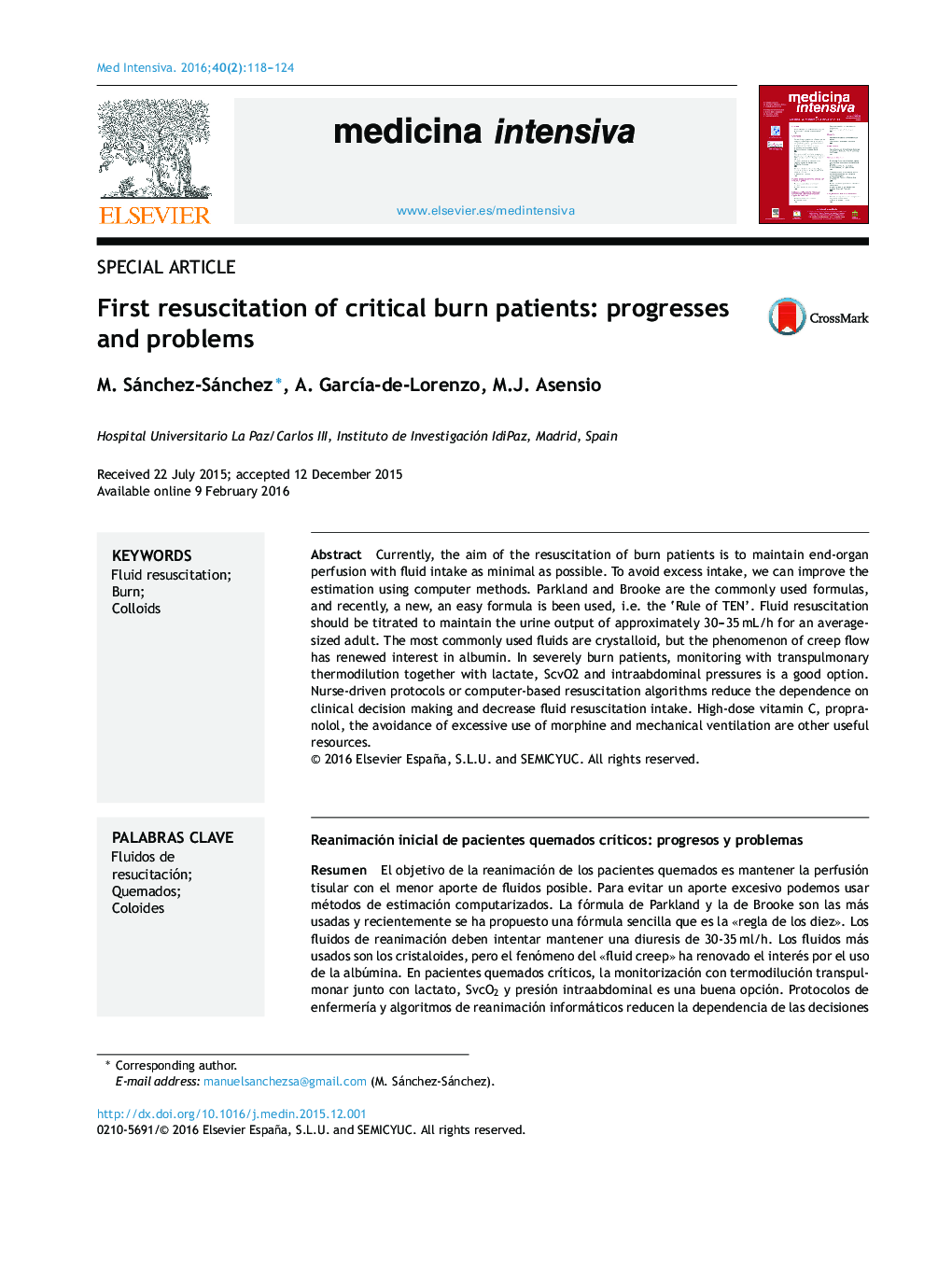| کد مقاله | کد نشریه | سال انتشار | مقاله انگلیسی | نسخه تمام متن |
|---|---|---|---|---|
| 3112503 | 1192318 | 2016 | 7 صفحه PDF | دانلود رایگان |
Currently, the aim of the resuscitation of burn patients is to maintain end-organ perfusion with fluid intake as minimal as possible. To avoid excess intake, we can improve the estimation using computer methods. Parkland and Brooke are the commonly used formulas, and recently, a new, an easy formula is been used, i.e. the ‘Rule of TEN’. Fluid resuscitation should be titrated to maintain the urine output of approximately 30–35 mL/h for an average-sized adult. The most commonly used fluids are crystalloid, but the phenomenon of creep flow has renewed interest in albumin. In severely burn patients, monitoring with transpulmonary thermodilution together with lactate, ScvO2 and intraabdominal pressures is a good option. Nurse-driven protocols or computer-based resuscitation algorithms reduce the dependence on clinical decision making and decrease fluid resuscitation intake. High-dose vitamin C, propranolol, the avoidance of excessive use of morphine and mechanical ventilation are other useful resources.
ResumenEl objetivo de la reanimación de los pacientes quemados es mantener la perfusión tisular con el menor aporte de fluidos posible. Para evitar un aporte excesivo podemos usar métodos de estimación computarizados. La fórmula de Parkland y la de Brooke son las más usadas y recientemente se ha propuesto una fórmula sencilla que es la «regla de los diez». Los fluidos de reanimación deben intentar mantener una diuresis de 30-35 ml/h. Los fluidos más usados son los cristaloides, pero el fenómeno del «fluid creep» ha renovado el interés por el uso de la albúmina. En pacientes quemados críticos, la monitorización con termodilución transpulmonar junto con lactato, SvcO2 y presión intraabdominal es una buena opción. Protocolos de enfermería y algoritmos de reanimación informáticos reducen la dependencia de las decisiones de los clínicos y disminuyen el aporte requerido. Otras actuaciones útiles son: usar altas dosis de vitamina C, emplear propranolol y evitar el uso excesivo de morfina y de ventilación mecánica.
Journal: Medicina Intensiva - Volume 40, Issue 2, March 2016, Pages 118–124
